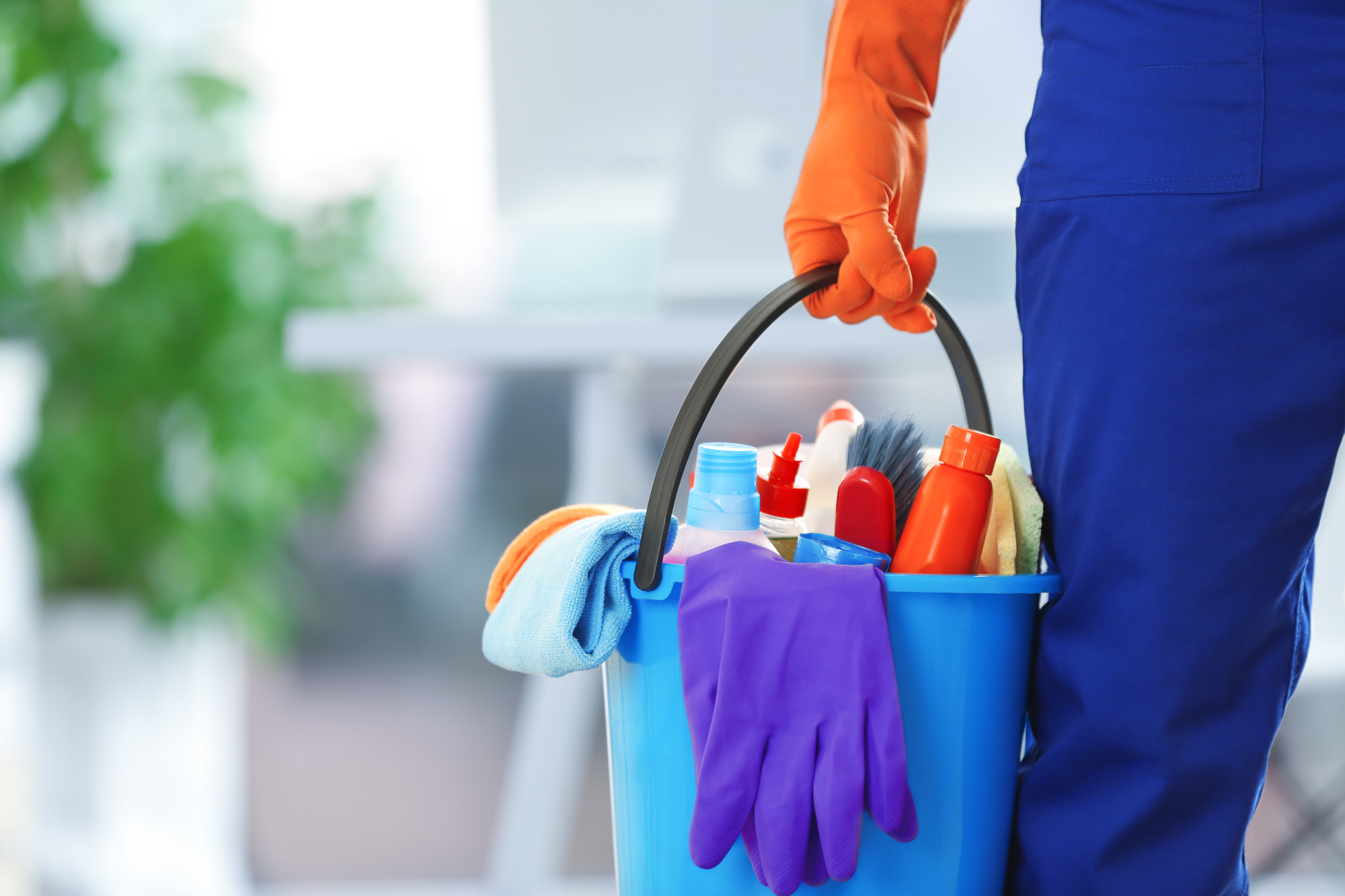The Ultimate Guide to Everyday Cleaning: How to Scrub the Surfaces, Vacuum Carpets, and Clear Out Any Clutter
The Ultimate Guide to Everyday Cleaning: How to Scrub the Surfaces, Vacuum Carpets, and Clear Out Any Clutter
Blog Article
Recognizing the Need for Completely Disinfecting and Sanitizing Regularly Touched Surfaces in High-Traffic Areas
In the world of public health and wellness and security, the precise disinfection and sanitization of often touched surfaces in high-traffic areas stand as vital measures in avoiding the spread of dangerous pathogens. By discovering the various elements of surface disinfection, from the threats connected with neglecting cleaning procedures to the effective methods that can be utilized, a more clear understanding emerges of the important role these practices play in protecting public health.
Relevance of Surface Disinfection
Stressing the comprehensive disinfection of high-traffic surface areas is vital in maintaining a sanitary environment and preventing the spread of unsafe virus. High-touch surface areas such as door handles, light switches, elevator switches, and kitchen counters function as breeding premises for infections and microorganisms. Routine disinfection of these surfaces is necessary to minimize the danger of contamination and transmission of diseases.
By carrying out a robust sanitation procedure, organizations and establishments can create a safer environment for consumers, site visitors, and staff members. Proper surface disinfection not only minimizes the spread of contagious conditions but also imparts self-confidence in the tidiness and safety of the facilities. This proactive approach shows a commitment to health and wellness and health, which is particularly vital in high-traffic locations where the likelihood of exposure to pathogens is heightened.
Moreover, surface sanitation plays an essential duty in overall infection control methods. Incorporated with hand hygiene techniques, using masks, and keeping physical distancing, detailed disinfection of high-touch surface areas creates a detailed defense against the transmission of damaging microorganisms. Prioritizing surface area disinfection is a vital element of an alternative technique to wellness and safety in shared spaces.
Risks of Neglecting Cleansing Practices
Disregarding extensive disinfection of high-traffic surface areas dramatically enhances the threat of microbial and viral contamination, positioning a major threat to the health and safety and security of people frequenting these spaces. Failing to apply correct cleansing methods can result in the accumulation and spread of harmful virus, consisting of viruses and bacteria, on regularly touched surfaces such as doorknobs, hand rails, lift buttons, and kitchen counters.

Moreover, ignoring the relevance of complete cleaning not just jeopardizes the health of individuals but likewise threatens efforts to keep a hygienic and tidy environment. It is crucial to identify the importance of correct disinfection methods in stopping the spread of infections and safeguarding public health and wellness.
Effective Sanitation Methods
To preserve optimum tidiness and lower the risk of contamination on high-traffic surface areas, employing efficient sanitation methods is necessary. One of the most effective and usual disinfection techniques is making use of chemical disinfectants. These items can differ in strength and structure, with some targeting details pathogens like germs or infections. It is important to adhere to the manufacturer's directions for correct dilution, call time, and ventilation when utilizing chemical anti-bacterials to guarantee their performance - Vacuum Carpets.
An additional reliable method is using UV-C light. UV-C light has been shown to be effective in killing a wide array of microorganisms by disrupting their DNA framework, thus preventing them from replicating. However, it is vital to utilize UV-C light appropriately, making sure that the appropriate intensity and exposure time are applied to attain the wanted sanitation results.
Furthermore, employing vapor cleaning as a disinfection technique can be highly reliable, particularly on surface areas that are heat-resistant. Heavy steam can penetrate permeable surfaces and eliminate bacteria, infections, and other microorganisms effectively. When making use of steam cleansing, it is essential to make certain that the surface gets to the required temperature level for a sufficient quantity of time to assure correct sanitation.
Effect On Public Health And Wellness
The maintenance of high requirements of sanitation and disinfection on high-traffic surface areas plays a crucial function in safeguarding public health and wellness. Regularly touched surfaces in areas with high step, such as doorknobs, hand rails, elevator buttons, and toilet facilities, serve as reproducing premises for hazardous virus. Failing to effectively disinfect these surfaces can result in the quick spread of transmittable diseases within neighborhoods. By applying comprehensive sanitation methods, the threat of transmission of viruses, germs, and various other bacteria can be significantly reduced.
In high-traffic areas like airport terminals, institutions, medical facilities, and public transport systems, the effect of rigorous sanitation procedures can not be understated. Focusing on the sanitization of often touched surface areas is a positive approach to advertising public health and boosting the security of people in shared rooms.
Carrying Out Regular Cleaning Up Protocols
Immediately instituting and sticking to a consistent routine of cleaning protocols is paramount for maintaining the tidiness and safety of high-traffic surfaces. Normal cleaning procedures are crucial in avoiding the accumulation of bacteria and virus on regularly touched surfaces, specifically in locations with high foot website her comment is here traffic. By executing an organized approach to cleaning, organizations can successfully decrease the danger of illness transmission and create a healthier atmosphere for workers, clients, and the public.
To develop a reliable cleaning timetable, it is essential to recognize high-traffic areas directory that call for regular attention. These locations might consist of doorknobs, hand rails, elevator switches, bathroom facilities, and common devices. Applying a routine cleansing regimen that targets these surface areas several times a day can considerably reduce the spread of dangerous microorganisms and viruses.
Additionally, using appropriate cleansing agents and anti-bacterials is essential to making certain that surface areas are completely sterilized. Regular training of cleaning staff on appropriate cleaning techniques and the significance of adherence to the cleansing routine is likewise important in preserving a hygienic environment. By focusing on consistent cleansing methods, organizations can promote the health and wellness and wellness of people who engage with these high-traffic surface areas.

Final Thought
In conclusion, it is important to prioritize complete disinfection and sanitization of frequently touched surface areas in high-traffic areas to stop the spread of harmful pathogens and preserve public health. Neglecting correct cleaning methods can boost the threat of contamination and transmission of illness. By carrying out normal cleaning procedures and using efficient sanitation approaches, we can produce a more secure setting for everyone (Scrub the Surfaces). It is critical to acknowledge the significance of keeping clean surface areas in high-traffic locations to guarantee the wellness of the community.
In the realm of public health and safety and security, the careful sanitation and sanitization of frequently touched surface areas in high-traffic locations stand as vital steps in avoiding the spread of resource harmful virus. By checking out the various facets of surface sanitation, from the dangers linked with neglecting cleansing protocols to the efficient methods that can be utilized, a clearer understanding emerges of the vital function these practices play in guarding public wellness.Additionally, utilizing vapor cleansing as a sanitation approach can be highly efficient, especially on surfaces that are heat-resistant. When making use of steam cleaning, it is vital to ensure that the surface gets to the called for temperature level for an enough amount of time to ensure proper sanitation.
In final thought, it is important to prioritize thorough disinfection and sanitization of regularly touched surface areas in high-traffic locations to protect against the spread of damaging microorganisms and keep public health and wellness.
Report this page